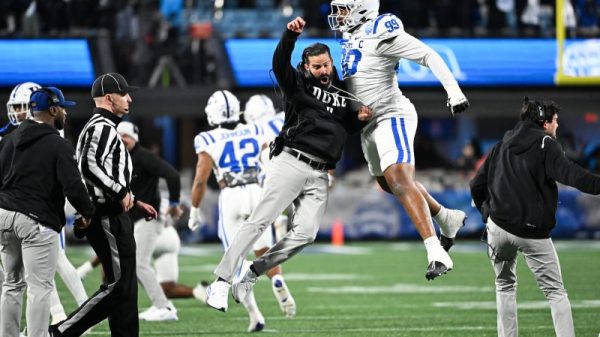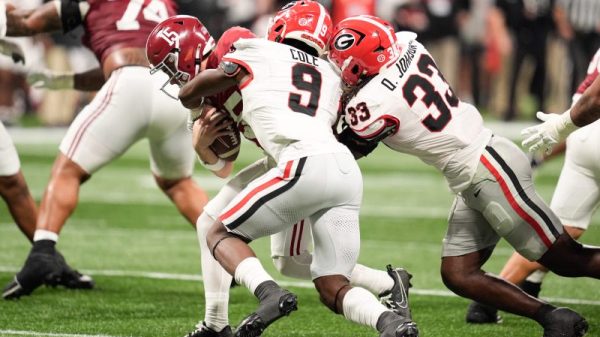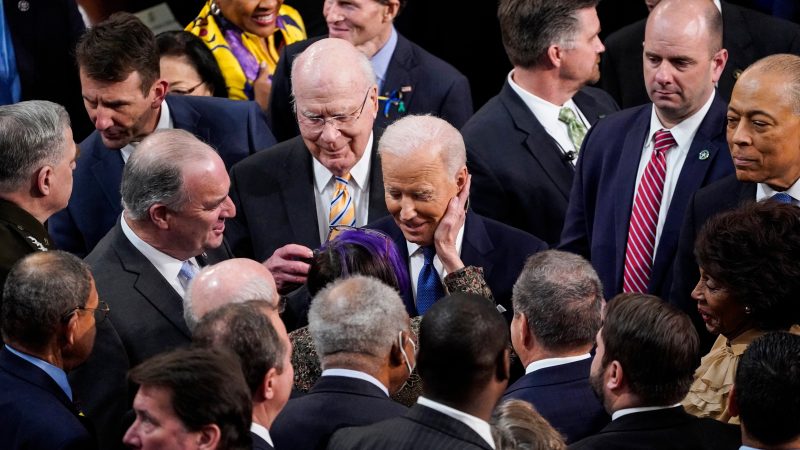The State of the Union address, one of the biggest annual rituals in American politics, comes at a pivotal moment in President Biden’s first term. The commander in chief will present his accomplishments from the previous year and his vision for the country’s future — in front of what is now a divided Congress.
The State of the Union as we know it is a supercharged joint address to Congress at the invitation of the speaker of the House, who presides over the event alongside the vice president. But throughout history, presidents have fulfilled their constitutional duty to update Congress in different ways. The practice has evolved over time into a blockbuster act of political theater — a far cry from how it once was delivered, as a memo sent to the lawmakers.
Here are the key features of the modern State of the Union, how they came to be and what to expect Tuesday evening:
The entire ceremony centers on the president’s address to a joint session of Congress. But the Constitution doesn’t actually require any of the trappings we usually associate with this event: Rather, Section 3 of Article II simply says that the president “shall from time to time give to the Congress Information of the State of the Union, and recommend to their Consideration such measures as he shall judge necessary and expedient.”
The nation’s first two presidents, George Washington and John Adams, both delivered “Annual Message” speeches during their terms in office, although Washington gave his first speech in New York rather than in Washington. Thomas Jefferson opted to fulfill his constitutional duty by sending a written letter to Congress, which some historians speculate he did because he was a shy public speaker. Each of his successors followed suit until Woodrow Wilson brought back in-person speeches in a move that stunned Washington in 1913.
The time, place and even the name of the speech are also up to the president. Franklin D. Roosevelt popularized calling the address a “state of the union,” Lyndon B. Johnson opted to hold the event during the evening for a prime-time national audience, and Ronald Reagan made it commonplace for the president to distinguish his first speech before Congress from a State of the Union address, to elevate the importance of the latter. Biden, for instance, called his first speech on Capitol Hill an “Address Before a Joint Session of the Congress.”
It would be an understatement to say the State of the Union attracts a powerful cross-section of Washington. All members of the House and Senate, all nine Supreme Court justices, the president’s Cabinet, the Joint Chiefs of Staff and more than 100 ambassadors to the United States are invited to attend. (It is no wonder that one member of the Cabinet is dubbed a “designated survivor” every year to sit out the speech elsewhere in case a catastrophe befalls the rest of the country’s leadership.)
Attendees’ reactions have become part of the political pageantry. According to White House transcripts from the past two decades, the rounds of applause from the audience steadily ratcheted up to more than 100 per address for Presidents George W. Bush, Barack Obama, Donald Trump and Biden. It has become commonplace for the political press to closely track which lines draw applause, which party’s lawmakers participate and how long the applause lasts.
On the flip side, audience members’ negative reactions also have become a regular feature of these addresses, as when Democrats protested at Trump’s comments touting his immigration policies in 2018 and Rep. Joe Wilson (R-S.C.) shouted “You lie!” at Obama during Obama’s first address to Congress. Biden’s 2022 address elicited heckling from Reps. Marjorie Taylor Greene (R-Ga.) and Lauren Boebert (R-Colo.) when he spoke about border security and veterans.
The president and House speaker can invite up to 24 people each to sit with the president’s spouse and in the Speaker’s Box, respectively. Each member of Congress also gets to invite one guest.
Reagan began the tradition of acknowledging guests during the speech when he invited Lenny Skutnik, a federal employee who saved a woman from the freezing waters of the Potomac after Air Florida Flight 90 crashed into the river in January 1982 shortly after takeoff. During his address, the president recognized Skutnik as an exemplar of the “countless, quiet, everyday heroes of American life.”
Every president since then has invited guests — who have included veterans, grieving families reeling from tragedies, and individuals, such as Skutnik, who performed extraordinary acts in moments of crisis — to illustrate points of his speech. Members of Congress often do the same.
Although these invitees often are local heroes, some this year will be nationally known: The Congressional Black Caucus invited the parents of Tyre Nichols, the Black man who died after being brutally beaten by police officers in Memphis last month. Also invited: Brandon Tsay, who disarmed the attacker during a shooting that killed 11 people in Monterey Park, Calif., also last month.
As the State of the Union has transformed from a constitutional errand to a televised political manifesto, the event has formal rejoinders from across the political spectrum. Responses to the president’s speech are now given by political parties and various congressional caucuses and in multiple languages.
While giving the response is a high-profile honor, the gig can be perilous for any rising political star, who risks making gaffes that haunt his or her public image for years. The prerecorded response by then-Arkansas Gov. Bill Clinton (D) in 1985 to Reagan was a step on his path to the White House but also clearly showed the pitfalls of a prewritten response. No party has done the same since. Sen. Marco Rubio (R-Fla.) was turned into a meme almost instantly for reaching for a glass of water while giving his response.
This year, Arkansas Gov. Sarah Huckabee Sanders will give the Republican response to Biden’s remarks. The progressive Working Families Party has tapped freshman Rep. Delia C. Ramirez (D-Ill.) to offer its response this year.
Recent presidents have aimed their messages not just at the assorted politicos in the room, but also toward the entire nation; the speech regularly draws tens of millions of viewers on prime-time television.
The speech will be carried on major broadcast and cable news channels, including ABC, CBS, NBC, CNN, MSNBC, PBS and Fox News. The Washington Post will host a live stream of the event with anchored coverage and commentary. The White House also will stream the event on its website.
Social media and other forms of online sharing have ensured that the highlights of the event can circulate long after the president makes his presentation live and in person. Scenes such as Trump’s announcing presidential awards and then-House Speaker Nancy Pelosi’s sarcastically clapping behind him and ripping up transcript of his address are recent examples of the State of the Union having a political and cultural afterlife long after the address has passed.



























